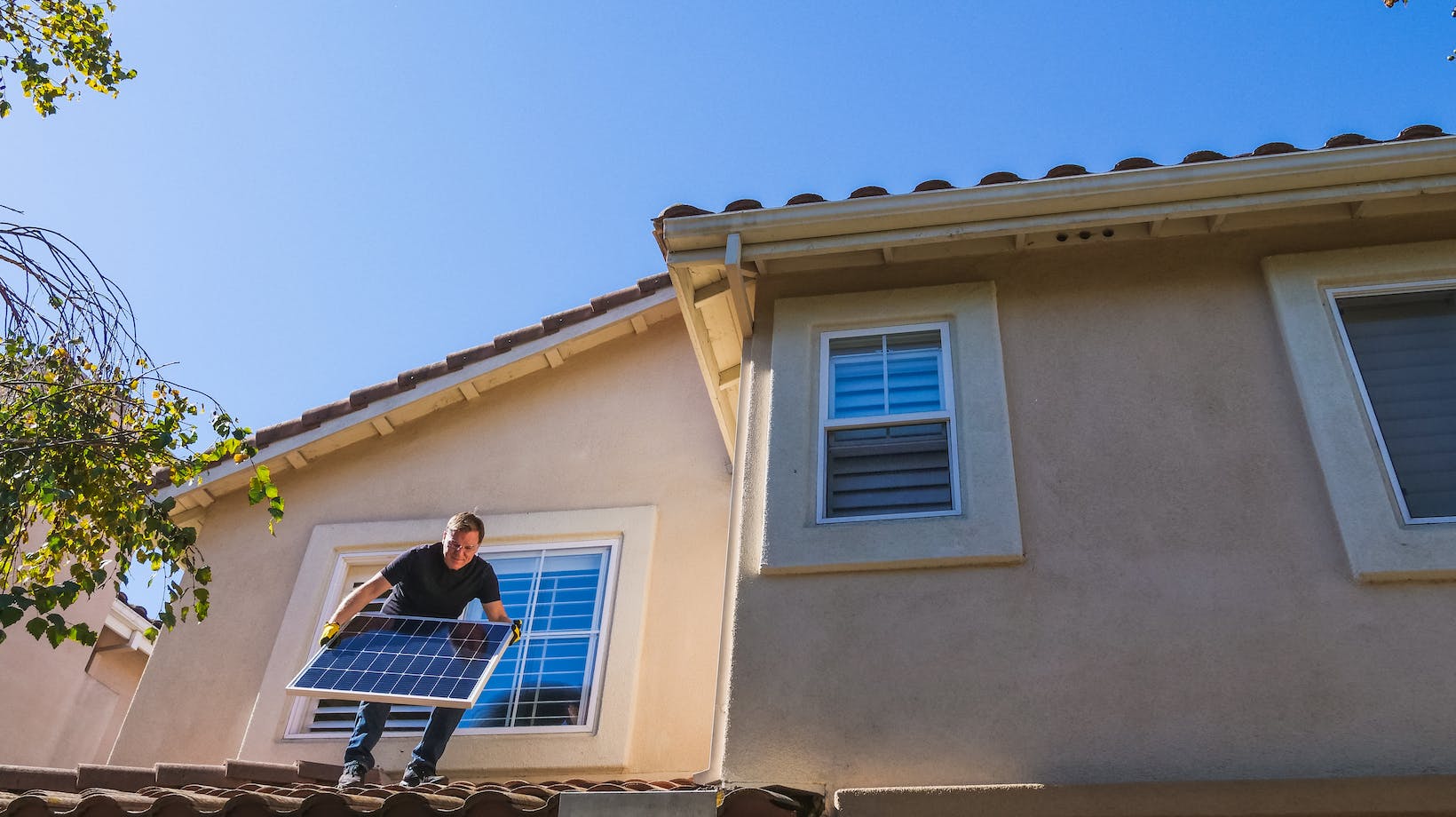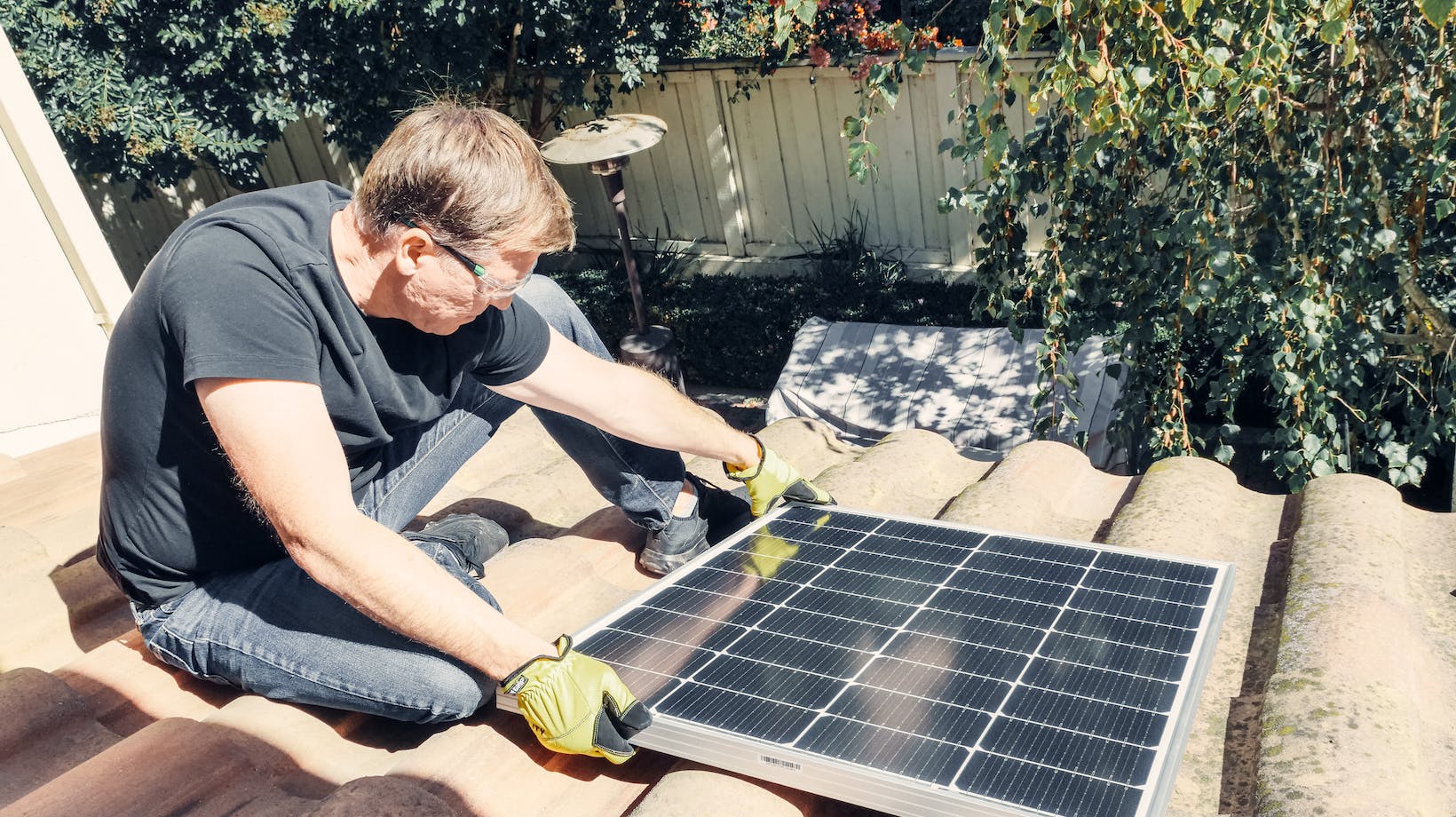
Installing solar panels on your roof to generate electricity, known as DIY or do-it-yourself solar, is becoming an increasingly popular option for environmentally-conscious homeowners looking to take control of their energy costs. But is tackling a DIY solar installation right for you? This comprehensive guide on DIY solar panels covers all the key information you need to decide.
How Do DIY Solar Panels Work?
DIY solar panels generate clean electricity from sunlight and feed it directly to your home. Most DIY solar setups are grid-tied, meaning they connect to the existing electrical grid. This allows any excess solar electricity you generate to flow back into the wider grid, earning you credits from your energy supplier. Whenever your solar panels don’t fully power your home, you simply pull additional electricity from the grid, as normal.
Solar panels produce direct current (DC) electricity which is fed to an inverter to convert it into the alternating current (AC) used to power lights, appliances, and everything else in your home. By installing a DIY solar array, you can effectively supplement a portion of the electricity you would otherwise have to pay your utility provider for fully—the more sunlight that hits your panels throughout the year, the greater your potential savings.
What Are the Benefits of DIY Solar Panels?
There are many excellent reasons homeowners decide to take on their solar panel installation project. Some of the primary benefits include:
Saves money on electricity bills – By generating your power, you reduce the amount of electricity you have to buy from the grid. These savings add up over time, and DIY solar owners commonly achieve a full return on investment in under 10 years.
Increases your home’s value – Adding solar panels can increase your home’s value, often by significantly more than the original cost of installation. This makes selling the property easier while allowing you to recoup your DIY investment.
Reduces your carbon footprint – Producing clean, renewable electricity right on your roof is one of the best ways to shrink your environmental impact. The average home solar system prevents over 30 metric tons of carbon emissions over its lifetime.
Provides energy security – Being less reliant on the traditional electric grid limits your exposure to power outages and grid supply issues. Solar energy paired with a home battery allows key circuits in your home to remain powered in a blackout.
Earns tax credits & incentives – State, federal, and even local solar incentives can offset 25% or more of the cost of a new solar installation. These credits put money back in your pocket while still delivering electricity bill savings.
Suits DIY-ers freedom & control – For the hands-on type, managing your solar project from start to finish allows you to learn the technology inside-out while customizing your system.

What Are Some Key Steps When Installing DIY Solar Panels?
Installing solar on your roof is not quite as simple as plug-and-play, but breaking the project down into a series of straightforward steps makes the process very manageable as a DIY endeavor for a single homeowner or group of friends. The key steps include:
Choose your panels & components – Quality DIY solar panels from the UK and equipment tailored for grid-tied residential needs are surprisingly affordable from reputable online retailers. Take time researching product specs and warranties.
Determine placement & layout – Mapping out panel locations for optimal sunlight with a south-facing roof tilt of 30-45 degrees is key. Account for spacing, string configurations, conduit runs, and equipment siting.
File permit paperwork – Most areas require permits for solar additions, which detail your project plans for officials to evaluate and approve. Permits also help ensure your utility processes new grid connections smoothly.
Mount racking & rails – Secure railings and rack systems to your roof’s rafters provide a strong base to support solar panels against wind and weather over decades. Conforming to roof planes and angles takes patience.
Attach panels & wire strings – Rigid solar panels clip into racking rails and link together via cables to form strings based on your voltage plan. Connecting strings in sequence builds system voltage. Leave access room between arrays for maintenance.
Install inverter & switchgear – Critical decision-making electronics connect solar strings to main electrical service, measuring output and transforming current as needed. Smart switchgear disconnects solar automatically for safety when needed.
Final electric inspections – Local building inspectors evaluate connections, surge protection, and parts specs, ensuring professional standards are met before allowing renewable energy interconnections. This protects all parties long-term.
Utility application & activation – With the green light from inspectors, applying for utility net metering and commission testing initiates actual solar production. Remote monitoring confirms system health.
The burn-in period after completing a new solar installation allows homeowners to address any last hiccups before enjoying years of smooth solar operation. While handling permits, technical wiring, and final connections often requires bringing in electricians or solar pros to consult or assist, motivated DIY-ers can self-manage the majority of the installation process with proper planning.
What Are the Costs for DIY Solar Panels?
Between dropping solar equipment prices and the various incentives available today, home solar through a DIY approach costs roughly half what it did just 7-8 years ago. Realistically, an adequate-sized solar system for most homes now runs $10,000-$14,000 on average for a full parts & labor DIY installation. However, direct purchase costs for just equipment on a DIY self-installed solar project typically span $7,000 to $9,500.
The largest share, 50-60%, goes towards solar panels, with the remaining costs covering inverters, racking, wiring, accessories, and any hired help. Additional costs factor in permit fees, final electric inspections, and grid connection approval expenses, which can vary by municipality. The investment pays off over the long run through electricity savings and credits plus added home value. Financing solar projects is also popular to help handle upfront costs.
For DIYers trying solar on an even tighter budget, beginning with a small starter system as low as $3,000 can work, too. This entry-level approach allows testing a deliberately sized “pilot” system to gain experience before potentially expanding solar modules later, as more funds allow. Starting solar small does not have to mean avoiding DIY installation benefits altogether.

What Skills Are Needed for DIY Solar Success?
Realistically assessing your skillset and commitment are prudent self-checks before diving into a major DIY solar endeavor. Handy homeowners passionate about adopting alternative energy often make great DIY solar owners. Key skills and traits boosting success include:
- Physical fitness & mobility – Lifting panels, climbing ladders, and working on angled roofs demands agility and strength.
- Persistence to master new skills – Learning electrical concepts, system sizing methodology, plus navigating regulations requires diligence. But knowledge builds confidence.
- Conscientious attention to detail – Precise measurements, wire management, and double-checking work are vital for clean, code-compliant solar installations.
- Willingness to seek expert guidance – Even DIY projects benefit from specialized solar advice on project scoping, equipment combinations, and inspectability.
Not everyone can or should install their solar panels. Involving professional solar technicians or electricians within your capabilities makes sense where lacking certain skills or physical traits. But coordination abilities, conscientious labor, and passion for efficiency can overcome obstacles that commonly worry prospective DIY solar adopters.
Conclusion
Installing solar without hiring a full-service contractor furnishes homeowners with serious money-saving potential while nurturing energy independence from the utility grid. DIY solar offers hands-on types customization control over generating their renewable electricity. Yet, viable solar projects demand careful planning, quality equipment, and methodical installation skills. Aspiring solar DIYers weighing costs, incentives, site specifics, and personal capabilities determine whether self-performing most solar tasks is achievable or if hiring solar pros for certain portions (or the whole project) proves the smarter path forward.





